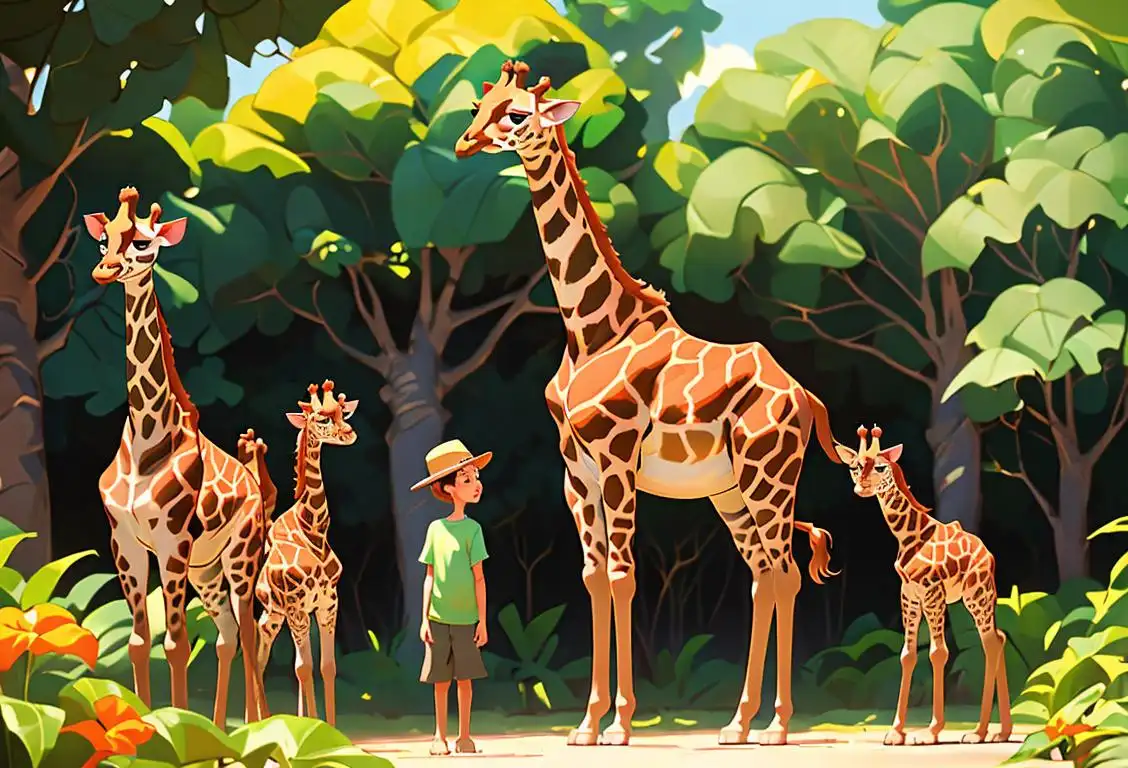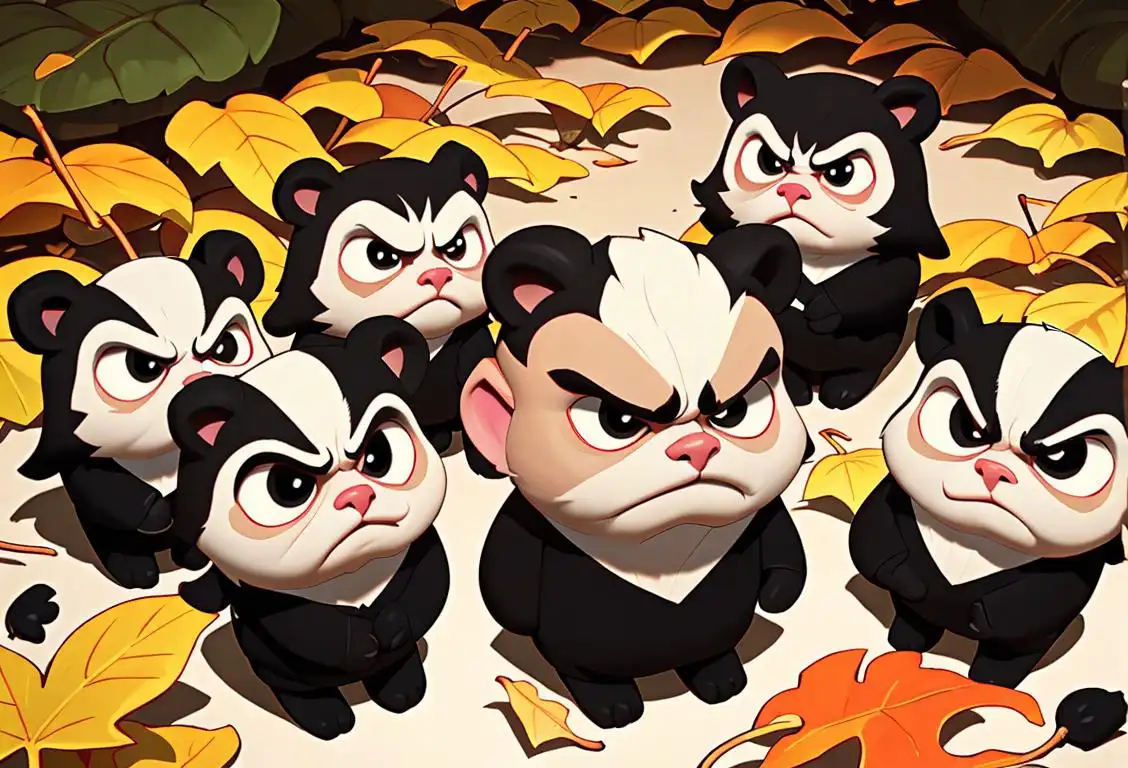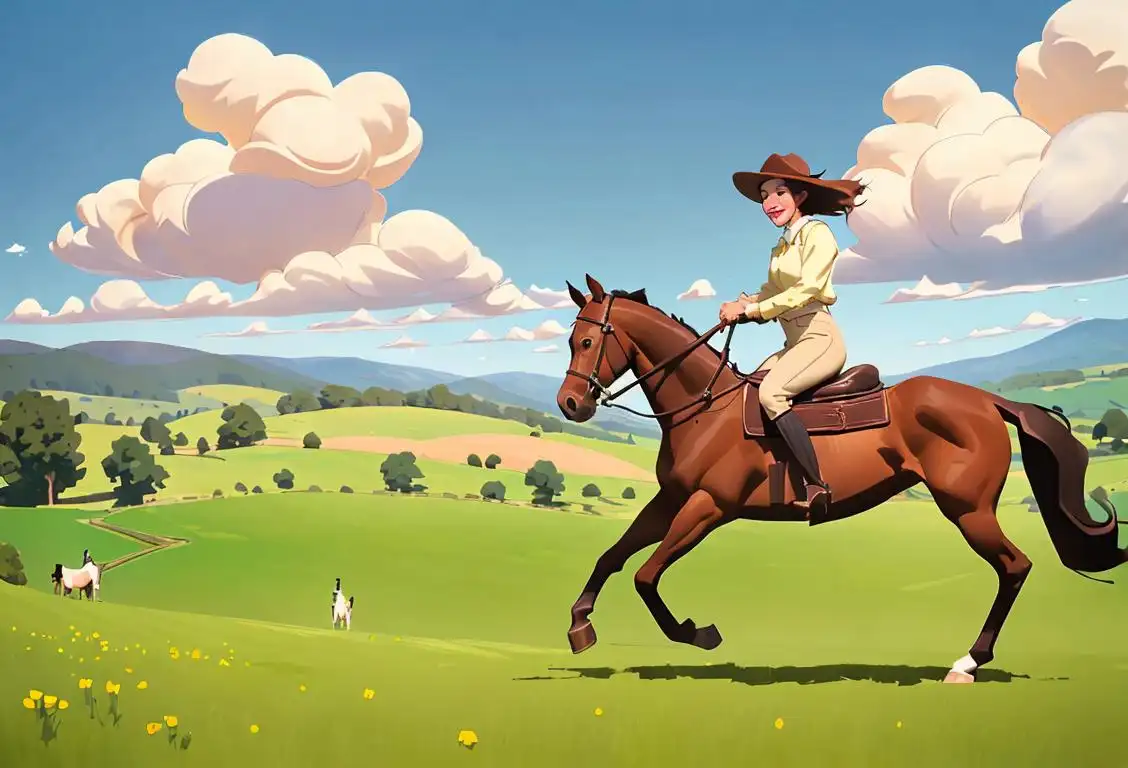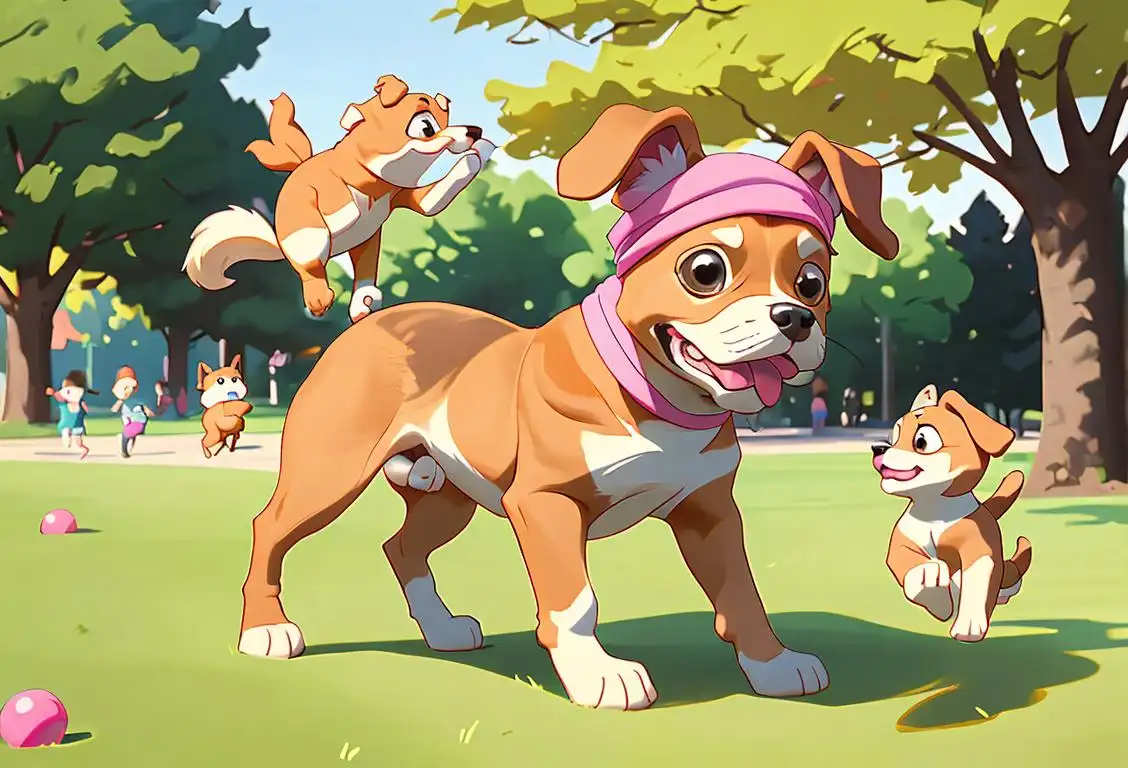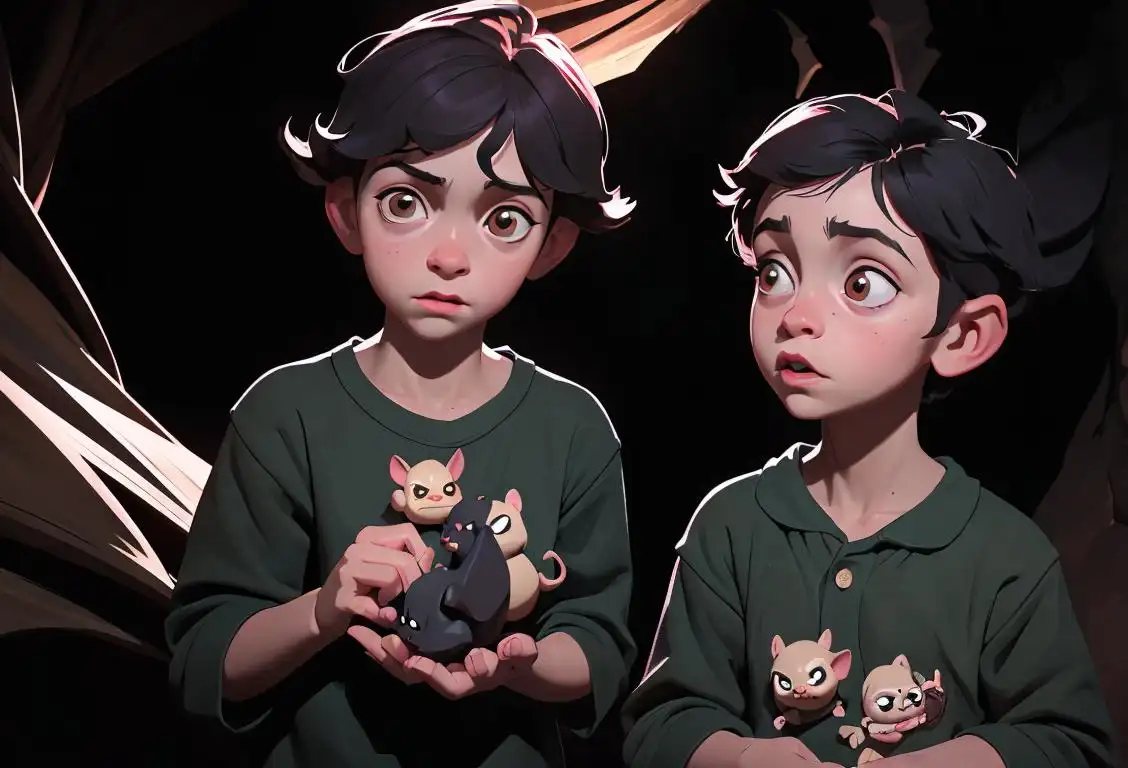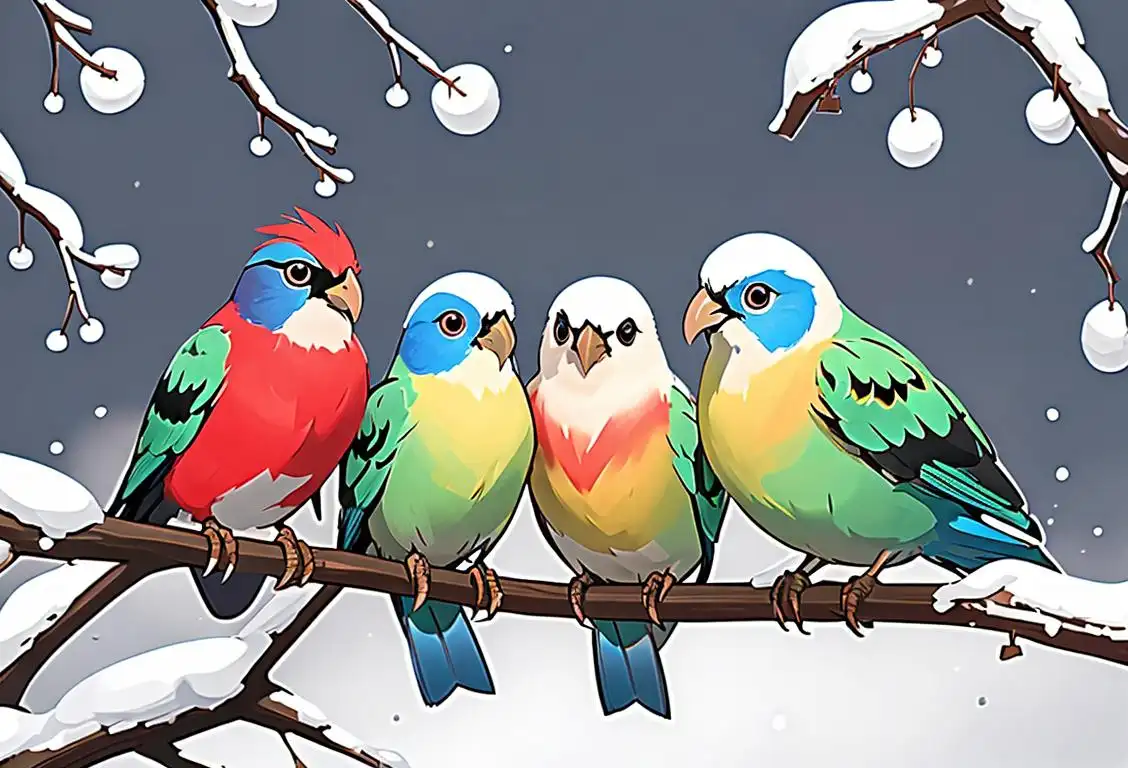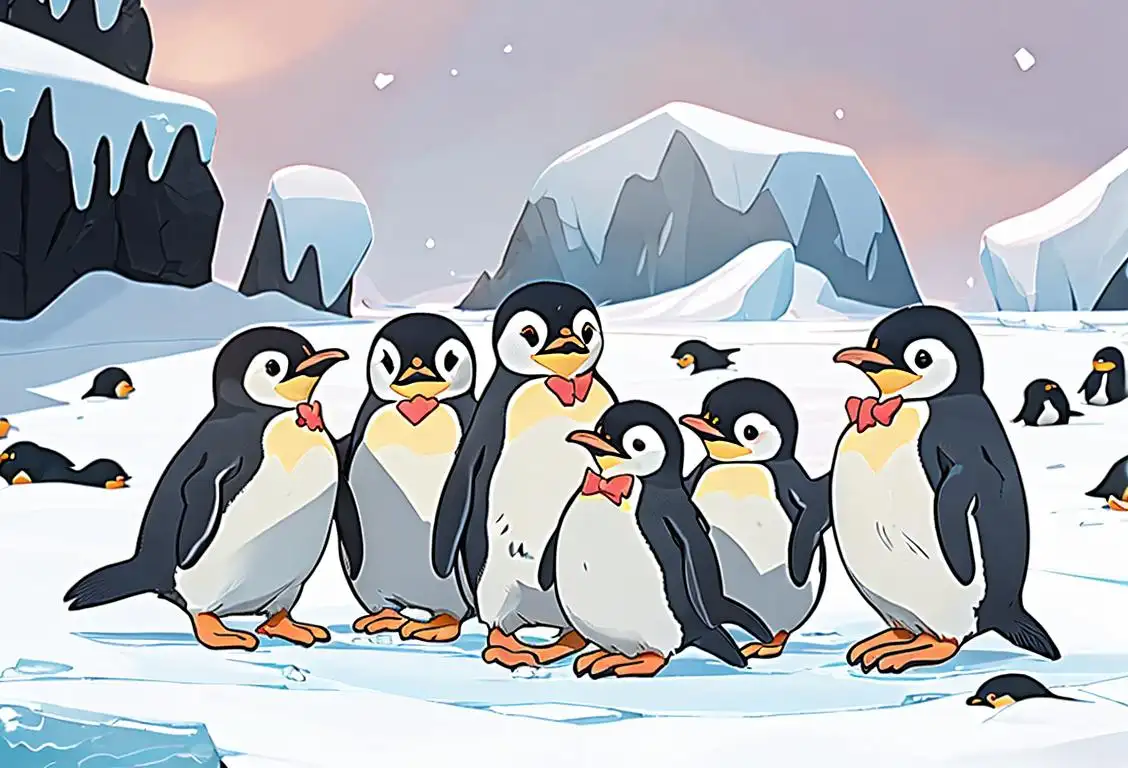National Farm Animal Day
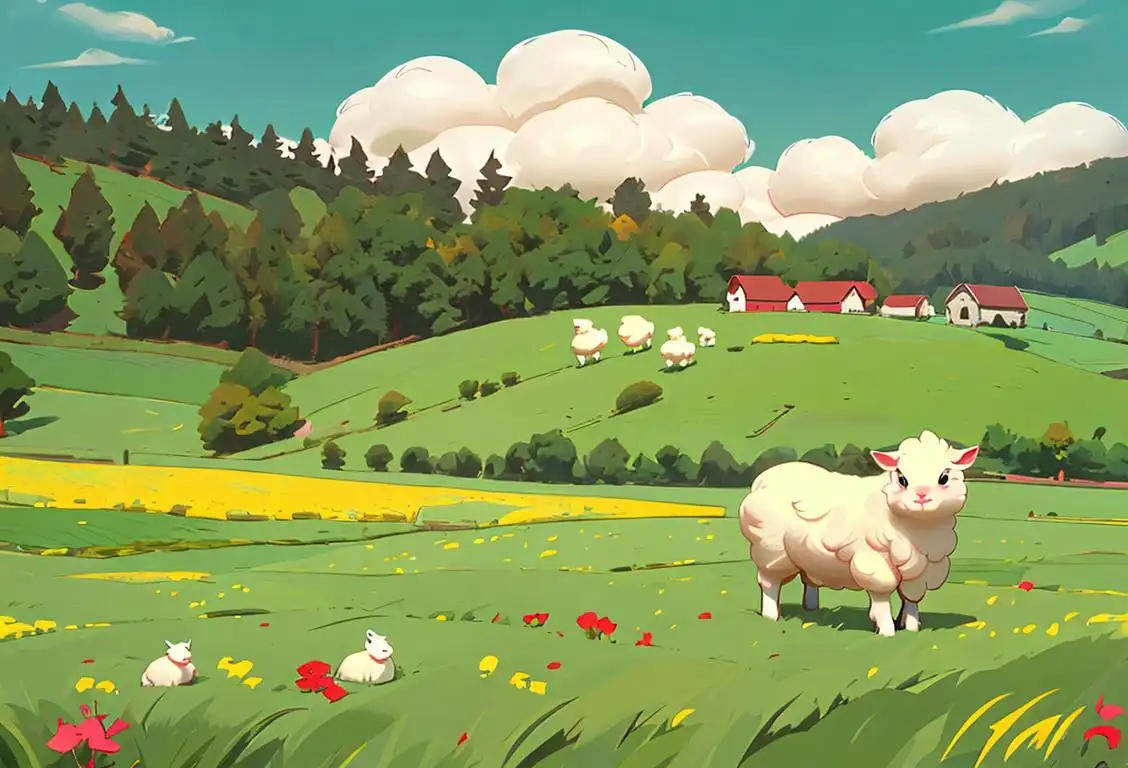
Howdy folks! Welcome to the delightful world of National Farm Animal Day! This pawsome day is dedicated to celebrating our four-legged, furry, and feathered friends that make our farms a whole lot more fun. So, put on your overalls and grab that pitchfork because we're about to dive into a barnyard full of fun and frolics!
When is Farm Animal Day?
It's national farm animal day on the 10th April.
The Birth of National Farm Animal Day
Now, you might be wondering, how did this fabulous day come into existence? Well, let me enlighten you with a little internet history. National Farm Animal Day was initially introduced as an online initiative that gained traction on April 10, 2017. Since then, it has become an annual celebration recognized by farm lovers worldwide!
A Day to Celebrate Our Farm Animal Friends
On this moo-velous occasion, animal enthusiasts take the opportunity to honor the animals that work relentlessly to keep our farms thriving. From the mighty horses that plow the fields to the adorable goats that provide us with delicious milk and cheese, our farm animal friends certainly deserve a round of applause!
National Farm Animal Day is not just about acknowledging the hard work and dedication of these animals; it's also a chance to raise awareness and advocate for their welfare. It reminds us to treat them with love, respect, and kindness they truly deserve. So, let's join hands and make sure our farm animal buddies lead happy and fulfilling lives!
Fun Ways to Celebrate
Ready to get the hoedown started? Here are a few paw-some ways to celebrate National Farm Animal Day:
- Visit a local farm and spend some time cuddling and feeding the adorable farm animals. Don't forget to give them a pat on the back for their hard work!
- Host a barnyard-themed party complete with hay bales, cow-print decorations, and a farm animal costume contest. Time to unleash your inner moo-se!
- Support local farmers by purchasing fresh farm products such as eggs, honey, and, of course, bacon (Sorry, pigs! We still love you!).
Did You Know?
Did you know that cows have best friends? These gentle giants form strong bonds with their fellow cows and are often seen hanging out together in groups. Talk about having BFFs on the farm!
History behind the term 'Farm Animal'
Prehistoric times
Domestication of animals
Humans began domesticating animals for various purposes, including food, companionship, and labor. This marked the beginning of the concept of farm animals, as these animals were kept and raised on farms for agricultural purposes.
13th century
Rise of agrarian society
With the development of agriculture, humans began domesticating animals for various purposes. These animals played a crucial role in helping humans cultivate crops and provide valuable resources. The term 'farm animal' emerged during this time to refer to the animals specifically raised on farms for agricultural purposes.
15th century
Rise of Agricultural Communities
During the 15th century, as human societies transitioned from hunter-gatherer lifestyles to settled agricultural communities, the term 'farm animal' was coined to describe the animals domesticated and raised on farms. This marked the beginning of a new era in human history, where animals played an essential role in sustaining agricultural practices and providing resources for human survival.
11th century
The Rise of Domestication
During the 11th century, the process of taming wild animals began as humans discovered the benefits of having animals around them. This period saw the emergence of early forms of agricultural practices, where humans started to domesticate animals for various purposes such as food, labor, and companionship. Animals like cows, sheep, and pigs were some of the first to be domesticated, marking the beginnings of what would later be known as 'farm animals.'
3000 BCE
Early Human Settlements
During the early human settlements, people started domesticating animals for various purposes, including food, labor, and companionship. The first farm animals were likely the result of taming wild animals such as goats, sheep, and pigs. This marked the beginning of the term 'farm animal', referring to animals raised and utilized in agricultural settings.
10,000 BCE
The Domestication of Animals
The term 'farm animal' traces its origins back to around 10,000 BCE when humans first began to domesticate animals. The early humans realized that they could benefit from the resources and labor these animals provided. As a result, they started to keep animals such as cattle, sheep, goats, and pigs in their proximity. These animals were initially used primarily for their meat, milk, and wool. This marked the beginning of human-animal relationships in agriculture and the emergence of the term 'farm animal'.
5000 BCE
Animal husbandry in ancient civilizations
Ancient civilizations such as the Sumerians, Egyptians, and Indus Valley inhabitants practiced animal husbandry, which involved the rearing and breeding of animals for different agricultural needs. These civilizations had specific terms to refer to the animals raised on farms, laying the foundation for the term 'farm animal.'
17th century
Scientific categorization
During the 17th century, naturalists and scientists started classifying and categorizing various species. The term 'farm animal' gained further prominence as it became a practical way to distinguish animals that were primarily raised for agricultural purposes from other types of animals.
18th century
Scientific Classification and Study
In the 18th century, scientists such as Carl Linnaeus developed systematic methods for classifying living organisms, including farm animals. This period saw a surge in scientific exploration and documentation of various species, leading to a better understanding of farm animals' characteristics, behavior, and utility. The term 'farm animal' gained further significance as it encompassed a wide range of species and breeds that were being studied and bred for specific agricultural purposes.
10,000 BCE
Agricultural Revolution
The agricultural revolution brought about a significant shift in human lifestyle and led to the transition from hunter-gatherer societies to settled farming communities. With the development of animal husbandry, people began to selectively breed animals for specific traits, enhancing their productivity and usefulness on the farm. This period saw further expansion in the variety of farm animals, including cattle, horses, and chickens.
18th century
The Industrial Revolution and the Rise of Intensive Farming
With the advent of the Industrial Revolution in the 18th century, farming methods underwent significant changes. The introduction of machinery and improved agricultural practices resulted in the rise of intensive farming. This period witnessed the shift from small, self-sustaining farms to large-scale operations that focused on mass production. 'Farm animals' played a crucial role in sustaining these intensively managed farms by providing essential resources like milk, eggs, meat, and wool.
4500 BCE
The Rise of Agriculture
Around 4500 BCE, with the advancement of agriculture, the importance of farm animals increased significantly. They played a crucial role in plowing fields, carrying heavy loads, and providing fertilizer through their manure. The rise of permanent settlements and the development of agricultural societies relied heavily on the labor and products of these animals. The term 'farm animal' became more widely recognized and commonly used during this period.
1800s
Industrial Revolution and Intensive Farming
In the 1800s, the term 'farm animal' took on a new significance with the advent of the Industrial Revolution. With the emergence of machinery and advanced farming techniques, intensive farming practices became more prevalent. Mass production of livestock for meat, dairy, and other products led to the term 'farm animal' becoming associated with animals raised specifically for economic gain. This period marked a shift towards factory farming and the separation of animals from traditional farming practices.
19th century
Farm Animals in Literature and Folklore
In the 19th century, 'farm animals' became not only integral to agricultural practices but also found their way into literature and folklore. Authors like George Orwell with his iconic work 'Animal Farm' (1945) and E.B. White with 'Charlotte's Web' (1952) brought forth the intelligent and sentient nature of farm animals, emphasizing their significance beyond mere utilitarian purposes. These literary works highlighted the emotional and ethical connection between humans and farm animals, sparking discussions on animal rights and welfare.
11th century
Feudalism and the importance of farm animals
During the Middle Ages, feudalism became the dominant social and economic system. Farm animals played a vital role in this system as they provided food, labor, and resources to the feudal lords and the local community. The term 'farm animal' further gained significance and recognition during this time.
9th Century CE
Medieval Farming
In the Middle Ages, farming became a central aspect of the feudal system, and the term 'farm animal' gained prominence. Animals formed an integral part of the agricultural workforce, providing labor for plowing fields, hauling loads, and transportation. The societal structure revolved around the management and utilization of farm animals, with different social classes having varying access and ownership of these animals.
18th century
Industrial revolution and animal husbandry
The industrial revolution brought significant changes to agriculture and animal husbandry practices. As farming practices became more mechanized and specialized, the term 'farm animal' encompassed a broader range of animals kept for farming, such as livestock used for meat production and dairy farming.
19th century
Livestock Standardization and Industrialization
With the rise of industrialization and the need to feed growing populations, the 19th century witnessed the standardization and industrialization of farming practices. The term 'farm animal' became more commonly used during this period as it became crucial to regulate and categorize livestock for efficient production and trade. Various organizations and institutions were established to establish standards and guidelines for breeding, rearing, and managing farm animals, shaping the course of modern agriculture.
20th Century
Animal Welfare and Ethical Concerns
During the 20th century, societal attitudes towards farm animals started to change. Increasing awareness about animal welfare and ethical concerns surrounding intensive farming practices led to a more compassionate approach. Organizations advocating for animal rights and welfare brought attention to the living conditions, treatment, and rights of farm animals. This period sparked debates about the moral responsibilities of humans towards these animals and their proper treatment on farms.
20th century
Advancements in Animal Husbandry and Welfare
The 20th century brought significant advancements in animal husbandry and welfare practices. As the understanding of animal behavior and welfare increased, it became imperative to ensure the humane treatment and care of farm animals. This led to the development of animal welfare laws and initiatives, focusing on ethical and sustainable farming practices. The term 'farm animal' became associated not only with agricultural productivity but also with the responsible stewardship of animals in human care.
18th century
Agricultural revolution and farm animal breeding
The agricultural revolution, which occurred primarily in Europe, brought significant advancements in farming techniques. The selective breeding of farm animals became prominent during this time. Farmers focused on improving the characteristics of specific animals for better productivity. This marked a turning point in the history and significance of farm animals.
18th Century
Agricultural Revolution in Europe
The 18th century witnessed an agricultural revolution in Europe, characterized by technological advancements and scientific innovations. This period marked the improvement of animal husbandry practices, breeding techniques, and veterinary care. The term 'farm animal' became more widely recognized and referred to animals specifically raised for agricultural purposes, distinct from pets or other domesticated animals.
20th century
Advancements in Animal Husbandry and Veterinary Science
The 20th century witnessed significant advancements in animal husbandry and veterinary science, leading to enhanced care and management practices for 'farm animals.' Scientific breakthroughs in nutrition, breeding, and disease control improved the overall health and productivity of these animals. Farmers and scientists worked hand-in-hand to develop optimal farming techniques that prioritized the well-being of the animals while ensuring efficient production. This era saw the emergence of specialized veterinary medicine for farm animals, further underscoring their importance in society.
20th century
Advancements in veterinary science
During the 20th century, significant advancements in veterinary science led to improved animal welfare and increased productivity in farming. The term 'farm animal' started to include not only traditional livestock such as cows, pigs, and sheep but also newly recognized farm animals like poultry, rabbits, and even aquaculture species.
21st century
The Rise of Sustainable and Ethical Farming
In the 21st century, there has been a growing movement towards sustainable and ethical farming practices. Concerns about animal welfare, environmental sustainability, and human health have prompted farmers and consumers alike to seek alternative methods of farming. 'Farm animals' have come to represent more than just sources of food or labor; they symbolize a shift towards conscious and responsible agriculture. This period has seen the rise of organic farming, free-range systems, and a general awareness of the well-being of 'farm animals' in our food production systems.
Present day
Diverse roles and animal welfare
In modern times, the term 'farm animal' encompasses an extensive array of animals raised for different purposes, including food production, fiber production, draft power, and companionship. Ensuring the welfare of these animals has gained significant attention, leading to improved practices and regulations to ensure their well-being.
20th Century
Industrialization and Modern Farming
The arrival of the 20th century brought significant changes to farming practices, fueled by industrialization and technological advancements. Mechanization of agriculture led to larger-scale farming operations and increased specialization in livestock production. The term 'farm animal' expanded further to encompass animals raised in factory farms, where mass production techniques became prevalent.
19th century
Rise of industrial farming
The 19th century witnessed the transition from small-scale, traditional farming to large-scale industrial farming methods. This period saw the mass production of meat, dairy, and other farm animal products. Farm animals were increasingly viewed as commodities, leading to the consolidation of the 'farm animal' term in everyday language.
21st century
Redefinition and Sustainability
In the 21st century, the term 'farm animal' has further evolved to reflect a growing emphasis on sustainability, biodiversity, and ethical considerations. The concept of agroecology and regenerative farming practices emerged, promoting ecological balance, efficient resource utilization, and the preservation of indigenous and rare farm animal breeds. This redefinition of 'farm animal' highlights the need to prioritize sustainable agricultural practices that ensure the well-being of animals, ecosystems, and human communities.
Present
Sustainable Farming and Animal Husbandry
In the present day, there is a growing focus on sustainable farming and animal husbandry practices. People are recognizing the importance of providing farm animals with a suitable environment, proper nutrition, and adequate space for natural behaviors. The term 'farm animal' encompasses not only livestock but also includes animals raised for agricultural purposes in a more humane and sustainable manner. It reflects the ongoing efforts to balance the needs of humans and the well-being of farm animals.
20th century
Animal welfare and farm animal rights
In the latter half of the 20th century, concerns regarding the treatment of farm animals gained significant public attention. Animal welfare movements advocated for better living conditions, humane practices, and the prevention of cruelty towards farm animals. This marked a shift in societal attitudes towards the treatment of 'farm animals.'
Did you know?
Did you know that cows have best friends? These gentle giants form strong bonds with their fellow cows and are often seen hanging out together in groups. Talk about having BFFs on the farm!Tagged
awareness fun animalsFirst identified
10th April 2015Most mentioned on
10th April 2017Total mentions
297Other days
Giraffe Day
Badger Day
Horse Day
Pupper Day
Bat Appreciation Day
Turtle Day
Bird Day
Penguin Day
Squirrel Appreciation Day
Red Panda Day
